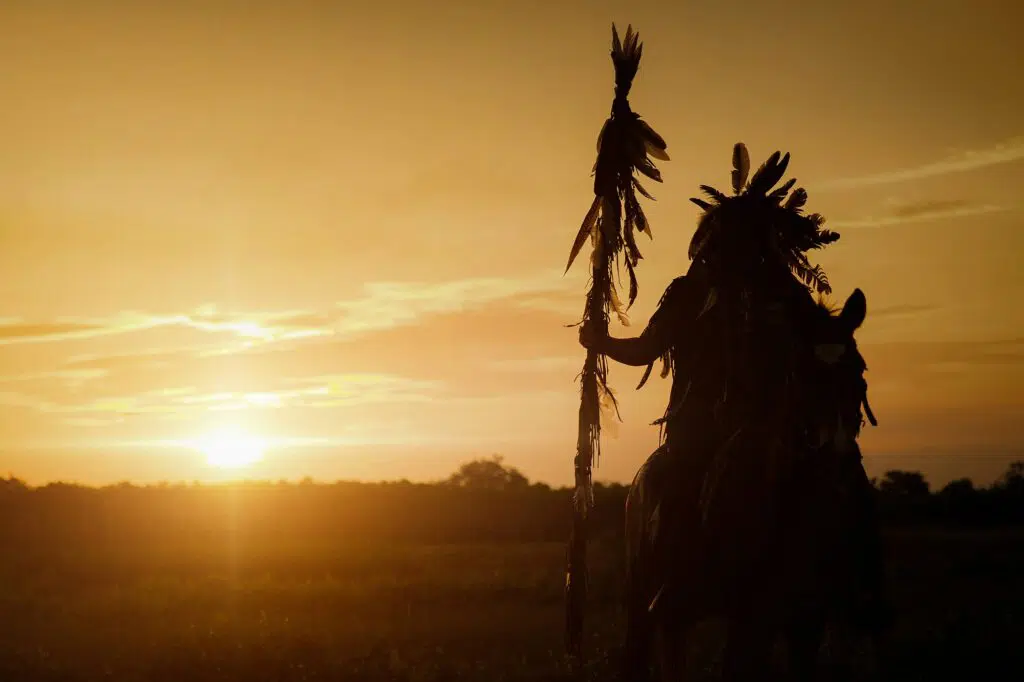Before European colonizers reached the shores of modern-day Florida, the Timucua Indians occupied the region. They represented the largest indigenous group in the area, with thirty-five different chiefdoms being established that led thousands of people. Timucuan speakers occupied an area of more than 19,200 miles, which consisted of many different and diverse environments, including lakes, rivers, swaps, woodlands, and other inland areas.
Although all of the Timucua spoke dialects of the Timucua language, they were not one single tribe, but instead were separate groups. It is believed that these people numbered between two and three hundred thousand people, with the evidence of their existence dating back to as early as 3,000 BC. Occupying areas of present-day Florida and Georgia, the Timucua Indians played a critical role in the history of Florida both before the arrival of European settlers and throughout the colonization of Florida by the Spanish, French, and British.
Introducing The Timucua People And Culture
As a semi-nomadic people, the Timucua roamed the land in the summer and spring, while during the fall and winter months, they established settlements in inland forests. While in situ, they would use “slash and burn” techniques to grow maize, squash, corn, and various root vegetables, which made up a large part of their diet. They also baked bread, collected berries, and fruit, cultivated tobacco, and hunted game such as alligator, bear, turkey, and bison. It is believed that they also collected oysters and shellfish in the summer months when they would move closer to the coast where the climate was cooler. Here, they could also fish and evidence of their culture is still found, as shell middens continue to be uncovered to this day.
The Timucua people wore minimal clothing due to the warm climate where they lived. Both men and women were adorned with tattoos which were thought to be gained by completing various deeds associated with battle, hunting, and marking other important moments in the evolution of their society. These tattoos were administered by puncturing holes in the skin and then rubbing ash into them to form elaborate decorations on the dark skin of the tribes-people.
Spanish explorers relayed that the men were very well-built and tall, standing a reported four to six inches above the Spanish soldiers. However, as the Timucua men wore their hair in a bun on the top of their heads, it’s thought that the height difference may have been perceived to be greater than it actually was.
The Impact Of The Spanish On Native Tribes
At the beginning of the 16th century, the Spanish set out to explore and colonize parts of Central Florida. Searching for gold and other natural resources, the Spanish had a huge impact on the local Timucua tribe. 1513 saw the arrival of Juan Ponce de Leon near modern-day St. Augustine, claiming the area for the Spanish Crown and naming it La Florida. In 1528, Panfilo de Narvaez reached Tampa Bay and began to explore the western edges of the Timucua territory. 1539 saw Hernando de Soto lead more than five hundred men through northern and central Florida, having a devastating impact on the local people.
His men took food, captured women for consorts, and instructed the men to work as guides and carry his army’s supplies as they moved through the areas. De Soto’s army and the Timucua had two ferocious battles where hundreds of local people were killed. He also released hogs into the nearby forests in an effort to establish a reliable food supply for future Spanish expeditions. However, these hogs had a devastating effect on the Timucua food supply. As a result, the tribe changed tack to hunt the hogs, having a lasting impact on their lifestyle and their local habitat.
The French And The Timucua Establish A Relationship
While the Spanish are thought to have had a predominantly negative impact on the Timucua people, French explorers worked together with the local people. In fact, much of what we know about the Timucua Tribe and their culture comes from the French and not from the Spanish. This is due to the fact that when the French arrived in modern-day Jacksonville, back in 1564, they established relations with the Timucua Tribe. Although there was an initial conflict, they sought to live alongside the natives. French settler Jaques Le Moyne took notes about the locals and drew sketches of the people that are one of the main resources that we have to this day about the early existence of these people.
Converting To Christianity
When the Spanish finally eliminated all of the French Huguenot settlements and St. Augustine was established in 1565 as a Spanish Presidio, they turned their focus to converting the Timucua people to Christianity. They established missions in many Timucuan chiefdoms to complete their goal. Just thirty years later, in 1595, contact with European settlers exposed the natives to new diseases, which killed a huge portion of the Timucuans. By 1700 there were only 1,000
Timucuan Indians left.
The Final Demise Of The Timucuan Indians
The British further decimated the Timucuans when they arrived in the eighteenth century, teaming up with other tribes, such as the Creek, Catawba, and Yuchi, who killed and enslaved the Timucua that were generally associated with the Spanish. When Florida was finally acquired by Britain in 1763, it is thought there were only 125 Timucuans remaining who were subsequently absorbed into the Seminole population, leading to the tribe officially being rendered extinct.
